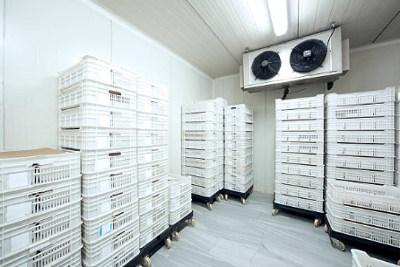
8 Red Flags to Identify Cross Contamination of Food in the US Halal Industry
Cross-contamination is an important issue in the US Halal food industry, especially as Halal consumers rely on producers, suppliers and many restaurants to strictly adhere to Halal guidelines. As any missteps or mistakes in handling, preparation, or storage can put the integrity of Halal certification in jeopardy, impacting the consumer trust and product quality. Let’s go through 8 key red flags to help identify cross-contamination in the Halal food industry and how to address them carefully and effectively.
-
Improper separation of Halal and non-Halal ingredients
One of the most common and major causes of cross-contamination of food in the Halal industry is the failure to separate Halal and non-Halal ingredients during raw material and finished product storage, such as shared shelves, freezers, or refrigerators that are not clearly labeled. This issue increases the risk of physical contamination, such as pork being mixed with raw meat. Solution: Businesses should invest more in separate storage units for Halal and non-Halal items and use clearly labeled containers and sections for Halal products to avoid the risk of spills or drips or airborne transmissions.

-
Shared Cooking Equipment
Using the same equipment, such as grills, fryers, mixers, and knives, for Halal and non-Halal products without thorough cleaning is a major issue; they can easily transfer residue from non-Halal items such as pork grease or alcohol-based marinades.
Solution: Invest in separate cooking equipment for Halal food or dedicate thorough cleaning with approved detergents before use.
-
Lack of Proper Training Among Staff
Employees who are not aware of Halal food preparation protocols may inadvertently cause cross-contamination by wearing the same gloves or using the same knives or trays for preparation. When asked about Halal guidelines, untrained employees gave inconsistent responses. Solution: Conduct weekly training sessions on Halal requirements to educate employees and provide best Halal practices under the guidance of trained supervisors.

-
Mislabeling or Absence of Labels
Incorrect or absent labeling can mislead Halal consumers and create opportunities for cross-contamination. For example, pre-packed food without clear Halal certification logo marks could contain non-Halal ingredients. Mislabeling can also cause doubts about the authenticity of Halal claims, leading to potential consumer distrust. Solution: Official certification logos and ingredient breakdowns must be clearly labeled on all Halal products for staff to recognize and ensure compliance.
-
Improper Handling of Alcohol-Based Products
Alcohol is used in many parts of cooking, such as flavoring, alcohol-based marinades, or alcohol-based cleaning agents, which can risk Halal compliance. Cross-use of utensils exposed to alcohol in Halal food preparation can also cause cross-contamination in Halal food preparation. Solution: Use alcohol-free alternatives if possible and ensure clear labeling and segregation.
-
Weak Monitoring and Documentation
Weak monitoring and documentation can undermine Halal compliance, making it difficult to verify whether food meets Halal standards or not. Main issues include missing and incomplete Halal certification records, the absence of regular internal audits or quality checks, and a lack of yearly inspections by Halal certification authorities. These gaps can create vulnerabilities that may lead to unintentional cross-contaminations. Solution: Businesses should establish a strong, robust system for maintaining accurate records and conducting periodic internal audits to ensure Halal compliance at every step of the food production and supply chain process.

-
Poor Packaging Practices Causing Contamination During Transport
Improper packaging of Halal products can also lead to contamination. Halal items and non-Halal items, if transported or shipped in the same vehicle without proper packaging barriers, may compromise the integrity of the Halal-certified product. Furthermore, while transporting the items in bulk, Halal products can be mixed with non-Halal products or loss of Halal products can easily occur if they are not packaged separately from the non-Halal products during production runs. Solution: Use proper tamper-evident, clear-label packaging and properly handle the product during vehicle transport. Halal food areas should be demarcated, and drivers should be aware of the products they are carrying, and they must adhere to Halal logistics standards.
-
Miscommunication in Multi-Cultural Workplaces
Language barriers or cultural differences among staff can lead to misunderstanding and miscommunication about Halal requirements and can result in unintentional cross-contamination. Solution: Employees from different cultures should be given multilingual training materials tailored to their specific languages. Making it easy for them to understand Halal standards. Appoint Halal compliance officers to ensure consistent communication, clarity, and proper adherence to Halal standards.

-
Why Vigilance is Key
Maintaining Halal integrity and adherence to strict Halal guidelines throughout the supply chain requires constant vigilance. Identifying these red flags and addressing these at a small stage can ensure compliance with Halal guidelines and reinforce the credibility of businesses. By implementing strong, robust protocols, proper training of staff in the Halal food industry, and fostering transparency, the Halal food industry can surely provide products that meet the highest standards of purity and quality.
Islamic Services of America (ISA) is a leading USA based Halal certification and auditing organization serving companies, the community, and the Halal certification industry for nearly 50 years. Contact ISA at isa@isaHalal.com or send your initial inquiry to Halal certify your products at https://www.isahalal.com/contact or visit the ISA website for more information at https://www.isahalal.com/